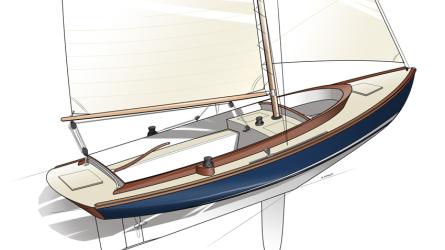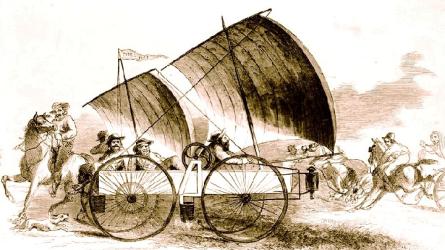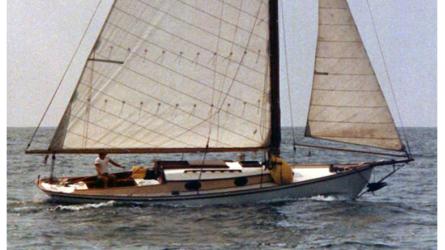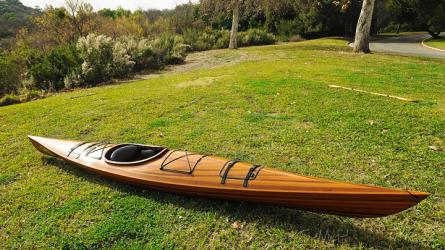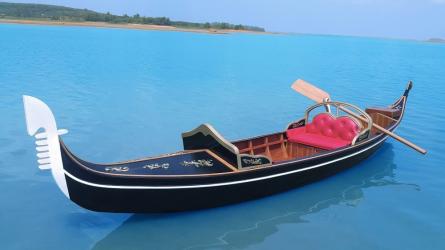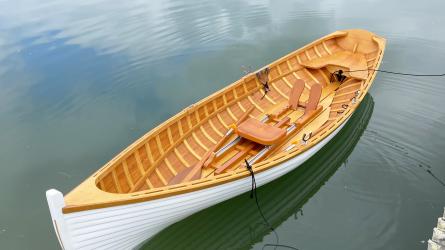March / April 2022
ALMA DOEPEL
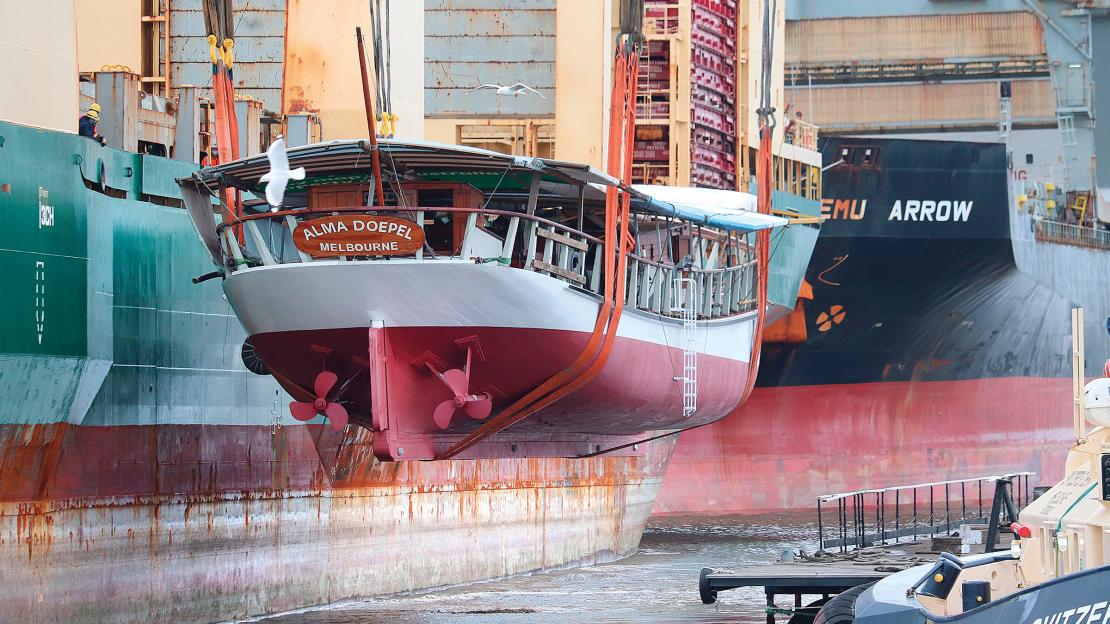
SAIL & ADVENTURE LTD.
ALMA DOEPEL is the last of Australia’s blue-gum clippers, a fleet that traded between the island state of Tasmania and the mainland city of Melbourne. After a 10-year restoration involving 10 professional shipwrights and 250 volunteers who gave 83,000 hours of their own time, she was gently craned into the waters of Melbourne’s River Yarra on October 16, 2021. Two more years of work remain.
When the Australian marine artist A.V. Gregory depicted the splendid three-masted foretopsail schooner ALMA DOEPEL hull-down and flying under a cloud of sail off Victoria‘s Cape Schanck in 1933, the vessel was 30 years old. She was one of a fleet of traditional sailing ships still gainfully employed in trading across Bass Strait between Hobart, the capital of the Australian island state of Tasmania, and mainland city of Melbourne. In the 19th and early 20th centuries, irrespective of their rigs, the vessels that lay in Hobart’s stone-walled Constitution and Victoria docks to load or discharge cargoes were simply known as ketches or barges. An exceptional few, among them ALMA, were revered as “blue-gum clippers.” It was a term of deep respect and affection that referred to their impressive speed, their sharp and graceful scimitar bows, and the bold sweep of their sheerlines, but more particularly to the Australian native hardwoods such as blue-gum, ironbark, blackbutt, and spotted gum with which they were constructed.
The blue-gum clippers and the flamboyant skippers who raced them hard across the perilous waters of Bass Strait—among them ALMA’s captain, “Flash Harry” Heather (see sidebar, page 74)—became household names and a source of parochial pride in Tasmania. The fierce rivals in the working fleet came together on friendlier terms each February, when they competed in a spectacular display of sail-handling in the historic Royal Hobart Regatta, held on the Derwent River estuary every year since 1836. The winning skipper enjoyed the prestige of hoisting to his masthead the coveted “Cock o’ the Derwent,” a polished, hammered-copper windvane awarded to the winning vessel. The immaculate ALMA DOEPEL, dressed overall in her signal bunting, often was honored as the regatta flagship.
To read the rest of this article:
Click the button below to log into your Digital Issue Access account.
No digital access? Subscribe or upgrade to a WoodenBoat Digital Subscription and finish reading this article as well as every article we have published for the past 50-years.
ACCESS TO EXPERIENCE
Subscribe Today
1 YEAR SUBSCRIPTION (6 ISSUES)
PLUS ACCESS TO MORE THAN 300 DIGITAL BACK ISSUES
DIGITAL $29.00
PRINT+DIGITAL $42.95
Subscribe
To read articles from previous issues, you can purchase the issue at The WoodenBoat Store link below.
 Purchase this issue from
Purchase this issue from




